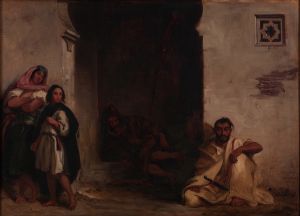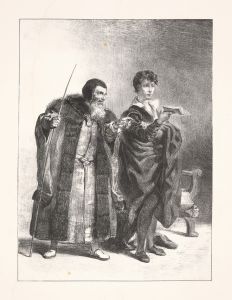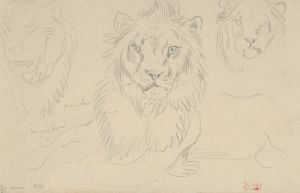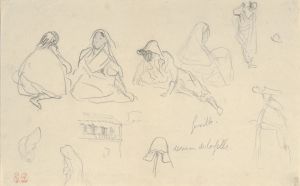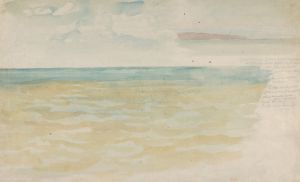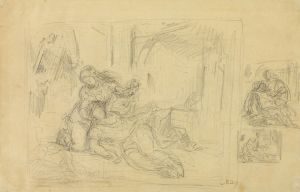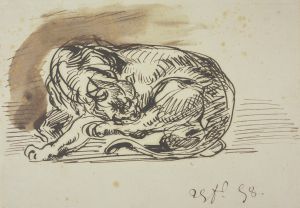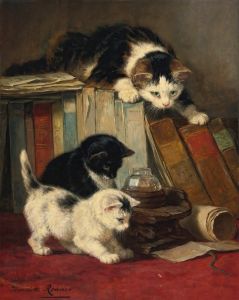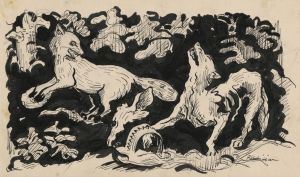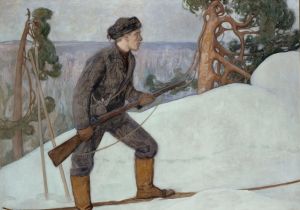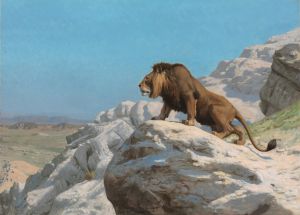
Lion Devouring a Horse
A hand-painted replica of Eugène Delacroix’s masterpiece Lion Devouring a Horse, meticulously crafted by professional artists to capture the true essence of the original. Each piece is created with museum-quality canvas and rare mineral pigments, carefully painted by experienced artists with delicate brushstrokes and rich, layered colors to perfectly recreate the texture of the original artwork. Unlike machine-printed reproductions, this hand-painted version brings the painting to life, infused with the artist’s emotions and skill in every stroke. Whether for personal collection or home decoration, it instantly elevates the artistic atmosphere of any space.
Eugène Delacroix's "Lion Devouring a Horse" is a compelling example of Romantic art, showcasing the artist's fascination with dramatic and emotive subjects. Delacroix, a leading figure in the Romantic movement, was known for his vibrant use of color and dynamic compositions, and this painting is no exception. Created in 1844, "Lion Devouring a Horse" reflects Delacroix's interest in the raw power and violence found in nature, a theme that recurs throughout his body of work.
The painting depicts a lion in the midst of attacking a horse, capturing the ferocity and primal instincts of the animal kingdom. Delacroix's choice of subject matter is indicative of the Romantic era's interest in exploring the sublime and the terrifying aspects of nature. The composition is marked by its dramatic tension and movement, with the lion's powerful form dominating the canvas as it sinks its teeth into the horse. The horse, in contrast, is shown in a state of distress and vulnerability, emphasizing the brutal reality of the natural world.
Delacroix's technique in "Lion Devouring a Horse" is notable for its expressive brushwork and bold color palette. The use of rich, earthy tones and dynamic contrasts between light and shadow enhances the painting's emotional impact. Delacroix was heavily influenced by the works of earlier masters such as Peter Paul Rubens, whose own depictions of animal combat may have inspired Delacroix's approach to this subject. Additionally, Delacroix's interest in the exotic and the untamed is evident in his choice to depict such a visceral scene.
The painting can be seen as part of a broader trend in 19th-century art, where artists sought to capture the intensity and unpredictability of nature. Delacroix's work often explored themes of conflict and passion, and "Lion Devouring a Horse" fits within this context as a vivid portrayal of the struggle for survival. The painting also reflects the Romantic fascination with the 'other' and the unknown, as artists of the time were drawn to subjects that lay beyond the boundaries of everyday experience.
"Lion Devouring a Horse" is housed in the Louvre Museum in Paris, where it remains an important piece within the collection of 19th-century European paintings. The work continues to be studied and admired for its technical mastery and its ability to convey the raw emotion and energy that characterize Delacroix's oeuvre. As with many of Delacroix's works, this painting invites viewers to confront the beauty and brutality of the natural world, encouraging a deeper reflection on the forces that shape life and death.
In summary, Eugène Delacroix's "Lion Devouring a Horse" is a powerful example of Romantic art, capturing the drama and intensity of nature through masterful technique and emotive subject matter. The painting remains a testament to Delacroix's skill as an artist and his ability to evoke the sublime through his work.





